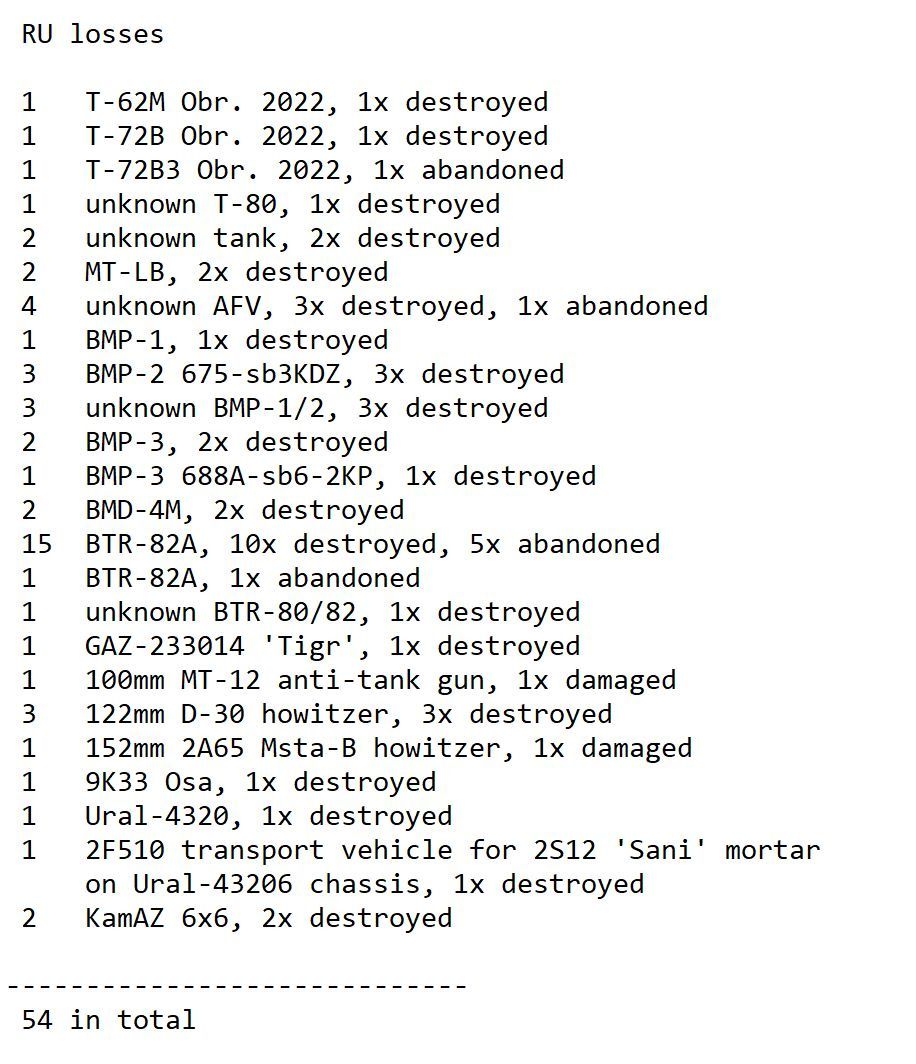Russia’s BTR Factory is Back to Soviet-Level Output
And Ukraine Is Eating the Results Alive
You can always tell when Moscow flips the switch from peacetime delusion to wartime panic. The evidence doesn’t show up at the Kremlin. It shows up on the assembly line and in satellite images.
According to OSINT analysts tracking Russian armor losses day by day, the BTR-82, Russia’s modernized eight-wheeled infantry carrier, is now appearing on the battlefield at a rate that defies any explanation except one: the Russians are building these things like it’s 1985.
Let’s investigate.
The current estimate is staggering: somewhere between 500 and 700 brand-new BTR-82s rolling out of factories every year.
Not refurbished museum pieces, not Soviet stock pulled out of storage with fresh paint and hope.
New metal.
New wiring.
New hulls.
This is full-on industrial war output, the kind the USSR maintained when it ran half of Europe and paid soldiers in pickled fish.
And you can track this surge directly through Ukrainian loss reports, which now list BTR-82 wrecks far more frequently than older BMP-1s. That’s not because the BTR-82 is “surviving better.” It’s because Russia is throwing so many into Ukraine that they’re becoming the armored equivalent of Russian conscripts.
The factory responsible is Arzamas Machine-Building Plant in Arzamas, Nizhny Novgorod Oblast, and it is operating at a pace that would make a Soviet commissar nod with respect.
The Soviet Playbook, Rewritten for Putin’s War
Russia didn’t enter this war with a secret stockpile of BTR-80s sitting in the desert waiting to be converted into BTR-82s.
Before 2022, Russia barely had enough BTR-80 variants to equip a fraction of its motorized infantry. The entire premise that Moscow is simply “refurbishing old vehicles” falls apart the moment you look at storage inventories. They weren’t there.
Which means the only explanation left is the accurate one: Moscow has restarted Soviet-style armored production from scratch.
That means new orders, new supply contracts, new welders, new casting runs, and new logistics pipelines. These are signs not of a country improvising through sanctions, but a country that has fully militarized its economy. And because sanctions cut Russia off from high-end optics and digital components, they compensate the traditional Russian way: speed, volume, and steel.
Russia can’t build elegant systems fast. But it can build a lot of mediocre ones quickly.
And historically? That’s always been Moscow’s favorite strategy.
How Today’s BTR-82 Surge Compares to Soviet Output at Its Peak
To understand what Russia is doing now, you have to zoom out and look at the only period in its history when armored vehicle production was truly industrialized: the late Cold War.
The USSR treated armored fighting vehicles the way Detroit treated station wagons. Assembly lines never slept, foremen never smiled, and steel went into tanks and carriers faster than Russian breadlines emptied.
Between the late 1970s and the final years before the collapse, the Soviet Union’s armored-vehicle complex at Kharkiv, Kurgan, Arzamas, Gorky, Mytishchi, and dozens of feeder plants, were turning out somewhere between 3,000 and 4,000 armored vehicles a year across all classes.
That included BMP-1s, BMP-2s, BTR-60/70/80 variants, command vehicles, reconnaissance vehicles, and a zoo of engineering machines that looked like they were built on dares.
On paper, the USSR could produce roughly 1,000 wheeled APCs per year when the planning ministry was in a particularly paranoid mood. The BTR-70 and BTR-80 lines at Arzamas were designed to hit that number, though real output rarely matched the targets because Soviet factories had an allergy to quality control, raw materials, and electricity that stayed on.
But it’s the scale that matters. Soviet planners built their armored fleets the way they built their infantry: unlimited and expendable.
Now pivot back to Russia in 2025.
Keep reading with a 7-day free trial
Subscribe to Eyes Only with Wes O'Donnell to keep reading this post and get 7 days of free access to the full post archives.




